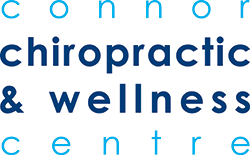A Gentle Start: Gradual Steps to Increase Movement
In a world marked by sedentary lifestyles and demanding schedules, the prospect of introducing more movement and exercise into our lives can be daunting. However, the key to sustainable change lies in the gradual and mindful incorporation of physical activity. This blog post will guide you through a journey of slow but steady progress, encompassing various exercise types and emphasizing the importance of preventing injuries for long-term health benefits while working to increase movement in your day to day life.
1. Assess Your Current Activity Level: A Starting Point
Before diving into a new exercise routine, take a moment to assess your current activity level. Be honest with yourself about your daily movements, from the time spent sitting at a desk to your daily walk or commute. Understanding where you are starting from provides a baseline for gradual improvement.
2. Start to Increase Movement Gently: The Power of Walking
For those less accustomed to regular exercise, walking serves as an excellent starting point. Begin with short walks and gradually extend both the duration and distance. Aim for at least 150 minutes of moderate-intensity walking per week, as recommended by health authorities. Walking not only improves cardiovascular health but also sets the foundation for more diverse forms of exercise.
3. Incorporate Strength Training: Building Resilient Muscles
Strength training is a cornerstone of overall fitness and injury prevention. Begin with bodyweight exercises like squats, lunges, and push-ups. As your strength improves, consider introducing light dumbbells or resistance bands. Focus on proper form and start with 2-3 sessions per week, gradually increasing intensity over time.
4. Embrace Flexibility: The Importance of Stretching
Flexibility is often overlooked but plays a crucial role in preventing injuries and promoting overall well-being. Incorporate gentle stretching into your routine, targeting major muscle groups. Yoga or Pilates classes, whether in-person or online, can provide structured guidance for improving flexibility and balance.
5. Cardiovascular Exercise: Find Activities You Enjoy
Cardiovascular exercise is vital for heart health and stamina. The key is to find activities you enjoy, whether it’s swimming, cycling, dancing, or even gardening. Start with short sessions and gradually increase both intensity and duration. Aim for at least 75 minutes of vigorous-intensity or 150 minutes of moderate-intensity cardiovascular exercise per week.
6. Listen to Your Body: Mindful Movement Matters
Throughout your exercise journey, pay close attention to how your body responds. If you experience pain beyond normal muscle soreness, consider modifying or scaling back the intensity. Mindful movement involves understanding and respecting your body’s signals, fostering a sustainable and injury-free approach to exercise.
7. Build a Routine to Increase Movement: Consistency is Key
Establishing a consistent routine is fundamental to long-term success. Schedule regular exercise sessions, making them a non-negotiable part of your week. Consistency not only enhances physical fitness but also contributes to mental well-being and the formation of healthy habits.
8. Gradual Progression: Patience Yields Results
The key to preventing injuries lies in gradual progression. Avoid the temptation to rapidly increase intensity or duration, as this can lead to overuse injuries. Instead, focus on small, incremental changes, allowing your body to adapt and build resilience over time.
9. Warm-Up and Cool Down: Bookend Your Workouts
Warming up before exercise and cooling down afterward are essential components of injury prevention. A dynamic warm-up, including light cardio and dynamic stretches, prepares your body for movement. Similarly, a cool-down with static stretching helps to reduce muscle tightness and enhance flexibility.
10. Hydration and Nutrition: Fuel Your Active Lifestyle
Proper hydration and nutrition are critical elements of a healthy and active lifestyle. Drink water throughout the day to stay hydrated, especially before and after exercise. Consume a balanced diet rich in whole foods, providing the necessary nutrients to support your energy levels and recovery.
11. Consult a Professional: Tailor Your Plan to You
If you’re unsure where to start or have specific health concerns, consider consulting with a fitness professional or healthcare provider. They can help tailor an exercise plan that suits your individual needs, taking into account any existing health conditions or limitations.
12. Celebrate Achievements: Acknowledge Your Progress
Celebrate your achievements, no matter how small. Acknowledge the progress you make along the way, whether it’s completing a longer walk, lifting heavier weights, or mastering a new yoga pose. Recognizing and celebrating your accomplishments reinforces the positive impact of regular movement and exercise on your well-being.
The Journey Towards a Healthier You
Embarking on a journey to increase your overall movement and exercise is an investment in your long-term health and well-being. By embracing a gradual and mindful approach, incorporating various exercise types, and prioritizing injury prevention, you pave the way for a sustainable and fulfilling active lifestyle. Remember, it’s not about how quickly you reach your destination but the progress and growth you experience along the way. Enjoy the journey towards a healthier you!


